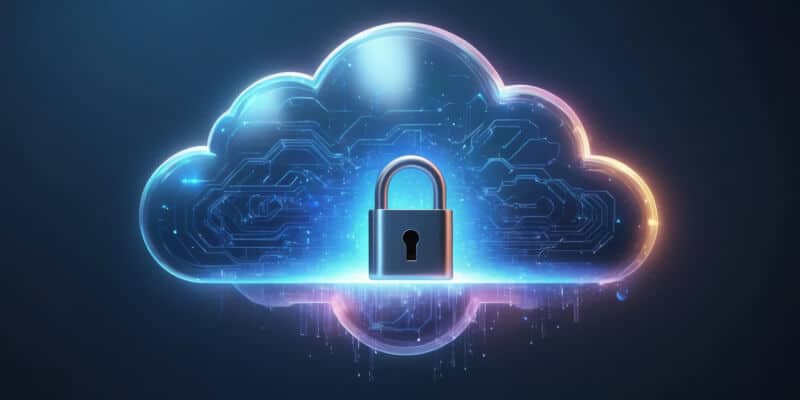
The number of cybersecurity threats for government agencies has steadily increased since 2022, and the data suggests it will continue growing upwards. This means it is not only beneficial for government agencies to consider how they can best address disaster recovery efforts; it’s an absolute necessity.
Traditional disaster recovery methods no longer cut it in today’s digital world. That’s why governments are turning to cloud-based disaster recovery solutions to keep their critical systems and data safe.
In this blog, GovOS takes a deep dive into cloud-based disaster recovery and its role in helping governments stay resilient.
Introduction to Cloud-Based Disaster Recovery
As internet access became more universal and cheaper, and computing resources became more affordable and readily available, cloud computing was born. It has grown in leaps and bounds over the last decade and has become a critical part of data storage and service delivery for many governments. It also plays a significant role in disaster recovery.
Unlike traditional recovery methods, cloud-based disaster recovery methods are easily adaptable to the budget and complexity of client systems. They can range from the low-cost and low-complexity methods of making backups to the more complex multi-faceted strategies.
Your chosen cloud disaster recovery strategy affects two important components of your disaster recovery and business continuity plan; RTO and RPO.
Recovery Time Objective (RTO)
RTO refers to the maximum acceptable downtime for a system or process after a disruptive event, such as a natural disaster, cyberattack, or hardware failure.
It represents the time within which a system or process must be restored to avoid significant adverse consequences to the organization. For example, if a company has an RTO of 4 hours for its critical systems, it means that these systems must be restored and operational within 4 hours of a disruption.
Recovery Point Objective (RPO)
RPO specifies the maximum tolerable amount of data loss that an organization can endure during a disaster or disruption.
It defines the point in time to which data must be recovered after an outage or data loss incident. For instance, if a company has an RPO of 1 hour, it means that in the event of a data loss incident, the organization can afford to lose no more than 1 hour’s worth of data. Any data loss beyond that would exceed the RPO.
Below are some examples of cloud-based recovery techniques for governments:
Techniques of Cloud-Based Disaster Recovery
Backup & Restore
Regular backups of data and applications are taken and stored in the cloud. In the event of a disaster, such as hardware failure or data corruption, these backups are utilized to restore systems to their previous state. Advanced backup solutions often incorporate techniques like incremental backups and deduplication to optimize storage efficiency and minimize recovery time.
RTO/RPO of this technique: Hours
Pilot Light
In the pilot light approach, data and essential components of your core workload infrastructure are continuously running at a secondary site in the cloud at a minimal scale.
The resources required for data replication and backup, such as databases and object storage, are always active. Other elements, such as application servers, are pre-configured but inactive and only used during recovery testing or when disaster recovery failover is invoked.
Upon detection of a disaster event, such as server failure or data center outage, additional resources are rapidly provisioned and scaled up to restore total operational capacity.
RTO/RPO of this technique: 10s of minutes
Warm Standby
In a warm standby setup, a fully functional but scaled-down clone of the primary system is maintained in a secondary site. The key distinction from the pilot light approach is that in warm standby, the system can handle requests immediately after a disaster (albeit at reduced capacity levels). In contrast, components need to be “switched on” or deployed in pilot light mode before the failover system can take over processing. The warm standby system only requires scaling up to accommodate primary production levels.
RTO/RPO of this technique: Minutes
Hot Standby
Hot standby configurations consist of redundant systems operating parallel to the primary infrastructure. This setup enables instant failover and minimizes downtime during a disaster. The secondary site may or may not handle user traffic. If it doesn’t, it’s called hot standby. If it does, it’s known as a multi-site setup, as both the primary and disaster recovery sites actively process user requests.
RTO/RPO of this technique: Real-time
The Need for Disaster Recovery in Government
Cyberattacks pose unique challenges for governments compared to private organizations. Unlike businesses, governments are tasked with ensuring the safety and welfare of entire populations, amplifying a disaster’s broad and intricate impacts.
While companies may suffer monetary, data, and property losses, government disasters encompass these and more, including national security risks, social unrest, loss of public trust, and potential breakdowns in essential services.
Below are a few of the reasons disaster recovery is vital in government security policy:
-
- Continuity of government operations: Government agencies provide critical services such as healthcare and emergency response. Disaster recovery plans guarantee the continuity of these services during and after a disaster.
- Protection of sensitive information: Governments manage vast amounts of sensitive data, including public records, financial information, and classified documents. Disaster recovery strategies mitigate the risk of data loss or tampering during a disaster.
- Maintenance of public trust: Effective disaster recovery demonstrates to the public that their government is prepared and capable of managing crises. This fosters trust and confidence in government institutions, which is essential for social stability and effective governance.
These are just some of the many ways cloud disaster recovery for governments can be instrumental for community trust and continuity.
Advantages of Cloud-Based Disaster Recovery for Government Resilience

-
- Scalability: Cloud computing providers have access to vast computing resources, which allows for easy scaling. Governments can adjust their cloud subscriptions and disaster recovery plans as needed, whether during regular operations or emergencies. This flexibility ensures government services stay available or can be quickly restored after a disaster, regardless of user traffic or data volume.
- Cost efficiency: Traditional disaster recovery solutions often require significant upfront hardware, software, and infrastructure investments. Cloud-based disaster recovery solutions, however, typically operate on a pay-as-you-go model, allowing governments to scale resources up or down as needed and avoid hefty initial costs.
- Faster recovery times: Disaster recovery in the cloud often provides faster recovery times than traditional methods. Techniques such as automated failover and virtualization allow governments to quickly spin up backup instances of critical systems and applications in the cloud, minimizing downtime and reducing the impact on service delivery.
- Geographic diversity: Cloud providers typically operate data centers in multiple geographic regions. This ensures that government data and services are resilient to regional disasters such as hurricanes, earthquakes, or floods. This is also particularly beneficial for accessing public records.
- Security: Data security is a primary concern for all cloud users, and cloud providers invest heavily in cybersecurity measures to address it. By leveraging cloud-based disaster recovery solutions, governments can benefit from these security measures, including encryption, access controls, and threat detection, to safeguard critical data and systems.
- Constant innovation: Cloud providers continuously innovate and introduce new features and technologies to improve disaster recovery capabilities. Governments leveraging cloud-based solutions can benefit from these innovations without the need for additional investments in local hardware or software upgrades.
- Collaboration: Cloud-based disaster recovery solutions enable seamless collaboration and interoperability between government agencies and departments. Shared resources and standardized protocols facilitate coordinated disaster response efforts, enhancing overall resilience.
- Simplified management: Cloud-based disaster recovery platforms often offer intuitive user experiences and built-in automation. This simplifies disaster recovery plan management, testing, and monitoring, increasing resilience. The GovOS platform allows users to operate on a self-service model, making it easier than ever to access land records, vital records and other important government documents agencies may hold.
Traditional Disaster Recovery Methods
Governments used to rely on disaster recovery methods centered around physical computing infrastructure. These methods included:
Data Backups
Regularly scheduled backups involve systematically copying data from primary to secondary storage to ensure that information can be restored during data loss or system failure. This process typically includes backing up files, databases, applications, configurations, and other critical data elements. Backups can be performed at different intervals (e.g., daily, weekly, monthly, etc.) depending on the organization’s requirements and data sensitivity.
Redundancy
Redundancy involves duplicating hardware, software, and network infrastructure components to ensure continuous operation even if one component fails. It can be implemented at various levels, including redundant power supplies, disk arrays, network connections, and entire systems. Redundancy minimizes single points of failure and increases system reliability and availability.
Hot Site
A hot site is a fully operational backup facility equipped with real-time replication of data and systems. In the event of a primary site failure or disaster, operations can seamlessly transition to the hot site, which can quickly assume the workload of the primary site.
Cold Site
A cold site is a backup facility that provides basic infrastructure such as power, cooling, and physical space but lacks operational equipment and data storage systems. Unlike hot sites, cold sites do not have real-time data replication or pre-configured systems. Instead, organizations must manually provision hardware, install software, and restore data in the event of a disaster. Cold sites are a cost-effective option for organizations with low tolerance for downtime but long recovery time objectives (RTOs).
Server Clustering
Server clustering involves configuring multiple servers to collaboratively deliver a single service or application to customers. These servers are interconnected and work together to distribute incoming requests, balance workloads, and ensure high availability. If one server in the cluster fails, another server automatically takes over its tasks, minimizing user disruption. Server clustering enhances fault tolerance, scalability, and performance of applications and services.
Replication
Replication is the process of copying and synchronizing critical data and systems in real-time or near-real-time to a secondary location. This secondary location is a backup and ensures data availability during a disaster or primary site failure. Replication can be synchronous, where data is copied immediately to the secondary site, or asynchronous, where there is a slight delay between data updates at the primary and secondary sites.
These traditional disaster recovery methods can get the job done. However, there are disadvantages:
Cons of Traditional Disaster Recovery Methods
-
- Resource intensive: Many of these solutions are resource-intensive, consuming bandwidth, storage space, computing power, and more.
- Delayed recovery: Some solutions, such as cold sites, may take too long to activate, leading to prolonged downtime during disaster recovery.
- Bandwidth usage: Solutions like replication can consume significant network bandwidth, impacting network performance and potentially increasing costs.
- Cost: Setting up and maintaining these solutions can incur significant costs in hardware, software, infrastructure, utilities, and ongoing operational expenses.
- Security risks: Implementing additional systems or replicating data across multiple locations can increase the attack surface and introduce security vulnerabilities.
- Scalability challenges: Scaling these solutions to accommodate growth or changes in workload may pose challenges.

Considerations for Implementing Cloud-Based Disaster Recovery
Proper preparation promotes the successful implementation of a cloud-based disaster recovery strategy. Here are some factors to consider:
Recovery Time Objective (RTO) & Recovery Point Objective (RPO)
Determine the acceptable downtime for each system (RTO) and the maximum amount of data loss that can be tolerated (RPO). These metrics will influence your choice of disaster recovery solutions and strategies.
Cloud Skills Gap
Addressing the skills gap in cloud-based disaster recovery requires skilled professionals like cloud architects and engineers. Agencies can either upskill existing staff or hire new personnel. To enhance cost-effectiveness, consider alternatives such as fractional hiring, which allows you to engage experts on a contract or project basis rather than full-time employment.
Security & Compliance
Ensure your cloud-based disaster recovery solution complies with all government regulations and security standards to protect sensitive data during replication and recovery.
Integration
To ensure a seamless disaster recovery experience, choose cloud-based disaster recovery platforms compatible with existing systems within the government agency. Alternatively, consider overhauling operations and implementing cloud-based data management platforms equipped with built-in disaster recovery capabilities.
Cost
Consider the volume of traffic and data involved in your government operations. Use this information to assess the cost of cloud-based data recovery from various cloud providers. Prioritize critical services to optimize resource utilization. Also, options like reserved instances and tiered storage options should be considered to minimize costs.
Testing & Validation
Regularly test your disaster recovery plan to ensure it functions correctly during a disaster. Run simulated disaster scenarios and failover tests to confirm the recovery process works and to remedy any weaknesses or gaps.
Future Trends & Innovations in Cloud-Based Disaster Recovery for Government
1. AI & Machine Learning-Assisted Disaster Recovery
AI algorithms can analyze data patterns to predict potential disasters, allowing for proactive measures to be taken. Machine learning can also automate certain recovery tasks, reducing human error and minimizing downtime.
2. Enhanced Testing & Simulation
Future solutions will focus on continuous testing and simulation of disaster scenarios. Governments will adopt innovative testing methodologies like chaos engineering to identify and rectify weaknesses in recovery plans.
GovOS: All-In-One Cloud Document Management & Disaster Recovery
Government agencies that handle extensive critical data often find it easier to manage everything through a single, centralized system rather than juggling multiple software applications separately.
GovOS offers a cloud-based disaster recovery platform specifically designed for government agencies. It helps streamline information storage and service delivery. Equipped with security protocols and top-notch data management procedures, the GovOS cloud-based disaster recovery platform is here to help your government agency stay resilient.
Explore the full range of solutions for government agencies or talk to an expert to learn how our platform can enhance your agency’s business continuity and disaster recovery plan.









